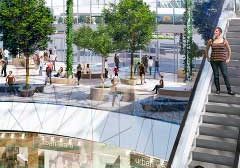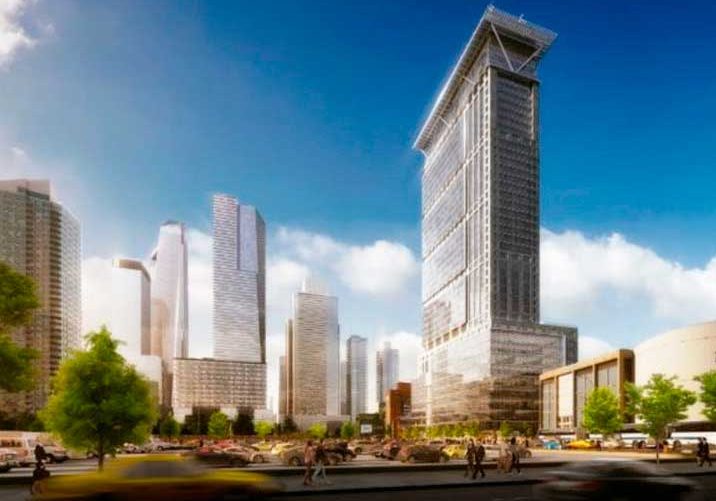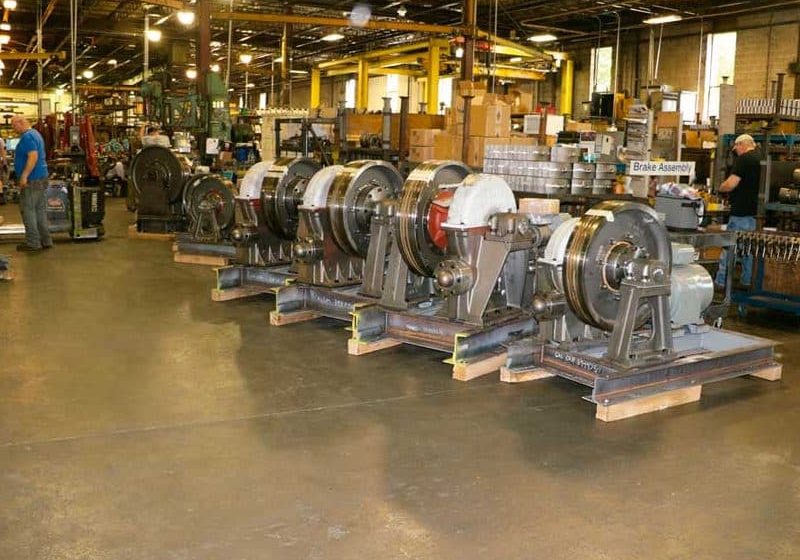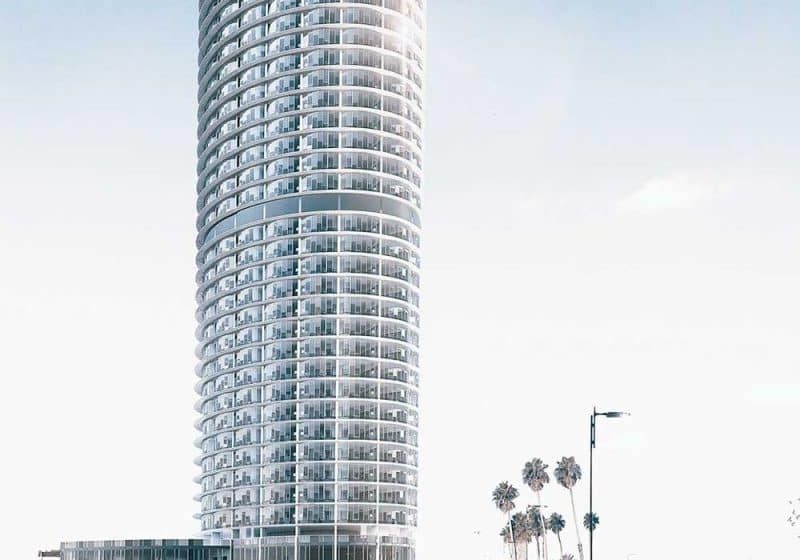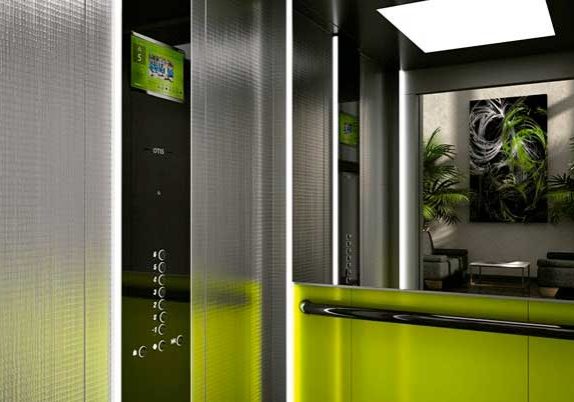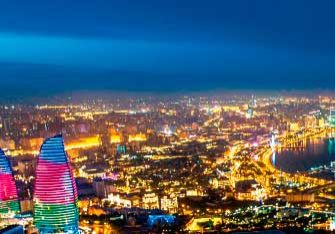EW gets an inside look at how KONE is designing an intuitive, smart system for landmark Helsinki development.
Northwest of downtown Helsinki in former container-shipping area Kalasatama, an energy simmers. At the heart of it is the REDI Living Lab, located in a four-story former gas-treatment plant built in 1908, adjacent to a microbrewery and surrounded by signs of urban vibrancy such as a large, colorfully graffitied skateboard ramp and flyers for both puppet shows and tattoo parlors attached to a telephone pole. This is fitting, since only steps away is the site of Helsinki’s annual Flow Festival, an arts and music event that last year attracted the likes of Iggy Pop and Morrissey, along with thousands of music fans.
REDI Living Lab is a showcase for REDI, a mixed-use development set to include eight towers — six residential — of up to 35 stories each, the tallest in Helsinki. Designed by internationally known Finnish architect Pekka Helin, REDI will have a shopping mall with approximately 200 stores. Half have already signed on, and the first are set to open in fall 2018. For the entire development, KONE is providing 65 elevators and 50 escalators, all connected to the E-Link remote-monitoring system (ELEVATOR WORLD, February 2016).
KONE is thinking far beyond equipment. Careful planning is going into the system’s functionality and design, which will evolve as designers gather data and learn. During a recent trip to Helsinki, your author toured the lab and learned about REDI and its vertical-transportation (VT) system from KONE Communications Manager Scott McMahon and Head of New Services and Solutions Teppo Voutilainen, along with developer SRV’s Arto Huuskonen, diretor of Digitization and Services and Iana Vesa, manager of Service Design.
The end goal of the system, says Voutilainen, is to save time, reduce stress and, ideally, make using an elevator or escalator a positive experience, regardless of whether the user is a first-time visitor or a resident. At KONE, McMahon notes, “It’s about a lot more than VT, but about looking at how people live and how they move through a building. It’s fascinating stuff.”
Voutilainen elaborates:
“We take a ‘service-design’ approach to learn from the users — the grandmothers and the families with kids and the busy working singles — what kind of elements work. Once [an elevator or escalator feature] has been reported as positive, it can be put into development and implemented into the buildings’ people flow, including VT. It’s all about exploring, experimenting, sometimes even failing, learning and improving.”
To develop REDI’s VT system, SRV assembled focus groups consisting of Finnish people who live in high rises in places such as New York City and Hong Kong to learn what causes negative and positive feelings during their daily comings and goings, Huuskonen says. “It can be basic things, like transporting items from storage to apartment or getting groceries home or loading your bike onto an elevator, that are causing stress,” he states.
Your author and her hosts spoke quietly, as the lab bustled with prospective buyers touring a pair of to-scale model homes, taking virtual, 3D tours of the property using high-tech headsets, and discussing options such as financing, finishes and furniture. The various cubicles and rooms throughout the lab were buzzing.
The salespeople here are busy: Huuskonen and Vesa report approximately 90% of the 285 apartments in building one were presold before the official February 2017 launch, and sales are still going strong. Ground has been broken on the shopping center, and SRV has a live cam on its website, redi.fi/en, for anyone interested to observe the progress. “Our banker said they are surprised at how fast the sales are, that this is very unusual,” Huuskonen said. Prices range from approximately EUR224,016 (US$244,502) for a 36-m2, two-room unit to a 142.5-m2 one with stunning views for EUR1.9 million (US$2.1 million).
Besides the model homes, the lab is equipped with MiniSpaceTM elevators that replicate the ones that will serve the apartments, right down to the digitized data display. The data one sees corresponds with that of the not-yet-built apartment building, so, even though the lab is only four stories tall, it looks and feels like you are traveling around a 35-story building.
The lab also has a scale model of REDI and a theater that provides in-depth information about the development, including the fact that entertainment features such as an indoor skydiving room, movie theaters and rock-climbing wall are planned. Connected to metro, rail and three major highways, REDI is envisioned as a destination, Huuskonen says. “We expect 12 million people to visit REDI during the first year of operation,” he states. “They will be coming from all directions.”
In time, REDI’s elevator system will be the epitome of futuristic. Traditional keys and passwords will be eschewed for digital identities and intuitive features, the data for which is stored in the cloud. There will be minimal cabling, which Voutilainen describes as “costly and old-fashioned,” but, rather, a wall-mounted device like an intercom system that sends impulses to the cloud to call an elevator, either by speaking into it or typing in information “so the elevator arrives to the floor when the resident is already walking toward it,” according to Vesa. Your author tried it out, and the elevator responded accordingly.
The aim in the future is for people to speak into a personal digital assistant device such as Alexa or Siri from their apartments and cars to let the elevator system know where they are and when they expect to reach the elevator lobby. User studies show that the most negative experiences are faced by users when they leave or enter the building. Those negative low-points need to be removed by SRV and KONE testing different solutions to identify those scenarios.
Scenarios will multiply as data is gathered. Voutilainen elaborates:
“As service designers come up with new needs as they interview people, we can create new software features and add them to the system dynamically. This is important, especially since there are five additional towers coming. Tower six residents may have more features than those in tower number one. Based on reactions and feedback, we can update features in the older buildings to be in line with the newest ones. That makes them future-proof, adjustable.”
REDI’s VT system is part of a whole that will include grocery shopping, dining, entertainment and services such as pet and car care. KONE estimates REDI residents will save 61 min. a day, thanks to their not having to “drive all over town” to take care of tasks. “Saving time from their daily routines gives people more time to simply enjoy their lives,” Huuskonen observes.
So, what’s the next step for elevators at REDI and other, similar developments? That very well could be units that know so much about the passengers that they tailor the experience to match. “In the future, we see development of sensors that track where a person moves, how they behave,” Huuskonen says. “For example, if you have your bicycle with you and your helmet on, it would know that and know to take you to the bicycle storage area.” Before anyone points out the Big Brother aspects of this, Huuskonen points out that any such data gathering would be optional.
Other elevator advances being looked at are mood-enhancing features — light, sound and smell — that change depending on time, location and audience: soothing music and a warm, low light after work, for example, or the smell of fresh coffee and bright lights in the morning. “I’m very excited about this music theme and what we can do with it,” Huuskonen says, not just in elevators but in overall retail settings. “There has been research that shows consumers increase their purchasing by up to 10% if the music is properly aligned with their brand.”
Voutilainen adds that traditional elevator music, often Muzak versions of popular tunes that are “just awful,” are not what we are talking about here, but, rather, certain sounds. “Some supermarkets have installed speakers where you can hear beverage cans being opened and liquid being poured,” he says. “You don’t really notice it but it’s in the back of your mind and increases the likelihood of your buying something.”
Get more of Elevator World. Sign up for our free e-newsletter.




